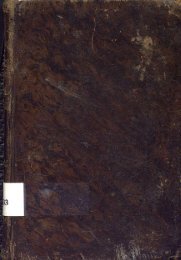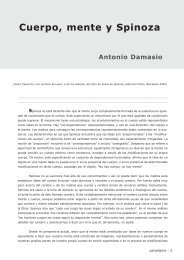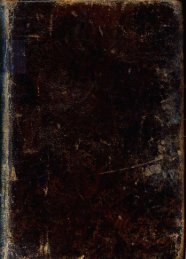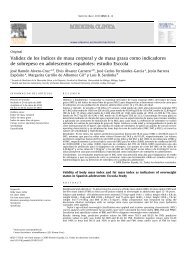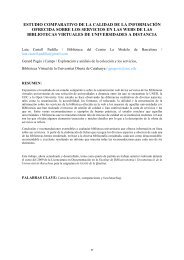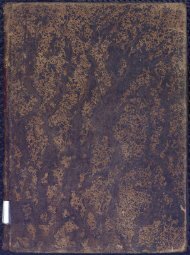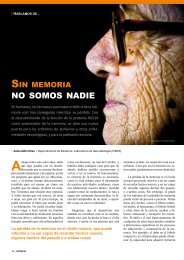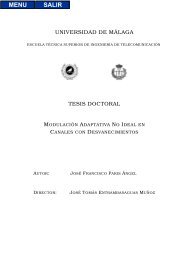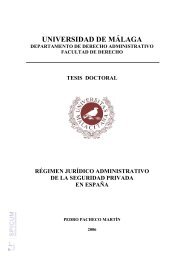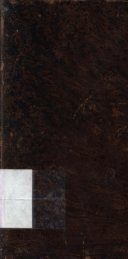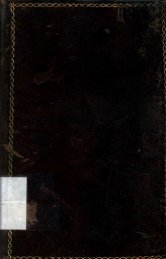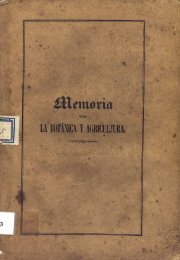Papel de las actividades superóxido dismutasa y catalasa en la ...
Papel de las actividades superóxido dismutasa y catalasa en la ...
Papel de las actividades superóxido dismutasa y catalasa en la ...
Create successful ePaper yourself
Turn your PDF publications into a flip-book with our unique Google optimized e-Paper software.
RESULTS AND DISCUSSION<br />
increase superoxi<strong>de</strong> anion production, does not mean that this bacterial strains cannot<br />
stimu<strong>la</strong>te another immunological parameter. In fact, survival rates, after experim<strong>en</strong>tal<br />
infection, increased in fish fed with strain Pdp13. Several authors have shown that<br />
probiotics may stimu<strong>la</strong>te differ<strong>en</strong>t immunological parameters, such as phagocytic<br />
activity (Irianto and Austin, 2003; Panigrahi et al., 2004; Brunt and Austin, 2005; Salinas<br />
et al., 2005; Díaz-Rosales et al., 2006), complem<strong>en</strong>t activity (Panigrahi et al., 2004; Díaz-<br />
Rosales et al., 2006), lysozyme activity (Irianto and Austin, 2003; Panigrahi et al., 2004)<br />
or cytotoxic activity (Salinas et al., 2005; Díaz-Rosales et al., 2006). Moreover, effects of<br />
probiotics have be<strong>en</strong> <strong>de</strong>scribed on specific immune response, increasing serum<br />
immunoglobulins levels (Nikoske<strong>la</strong>in<strong>en</strong> et al., 2003; Aubin et al., 2005). For these<br />
reasons, strain Pdp13 can be consi<strong>de</strong>red as a probiotic also, although evaluation of other<br />
immunological parameters would be necessary.<br />
On the other hand, probiotic bacteria have to be administered at optimal doses,<br />
<strong>de</strong>p<strong>en</strong>ding on fish size and bacterial strain (Nikoske<strong>la</strong>in<strong>en</strong> et al., 2003), for this reason<br />
Pdp11 effect is differ<strong>en</strong>t to Pdp13 and the results obtained with Pdp11 and sole are<br />
differ<strong>en</strong>t to results previously obtained with Pdp11 and gilthead seabream (Díaz-Rosales<br />
et al., 2006).<br />
Finally, apart from the immunological effects of probiotics in sole immune<br />
response, possible changes in intestinal microbiota due to probiotics were evaluated. In<br />
spite of the great number of published works concerning microbial communities in fish<br />
(Spanggaard et al., 2000; Holb<strong>en</strong> et al., 2002; Sandaa et al., 2003; Al-Harbi and Naim<br />
Uddin, 2004; Hjelm et al., 2004; Huber et al., 2004; J<strong>en</strong>s<strong>en</strong> et al., 2004), none of them try<br />
to evaluate possible shifts in microbiota after probiotic administration.<br />
In this work DGGE, D<strong>en</strong>aturing Gradi<strong>en</strong>t Gel Electrophoresis, (Muyzer et al.,<br />
1993), was used to study the intestinal microbiota of soles fed with probiotics. Two sets<br />
of primers were evaluated (Nübel et al., 1996; J<strong>en</strong>s<strong>en</strong> et al., 2004). Primers <strong>de</strong>scribed by<br />
Nübel et al. (1996) being selected as the best to study of bacterial communities in the<br />
pres<strong>en</strong>t work after analysis of banding pattern by Pearson coeffici<strong>en</strong>t.<br />
The band pattern obtained was very simple, with few predominant bands, results<br />
alike those <strong>de</strong>scribed by Muyzer et al. (1993), who reported that communities with a few<br />
105



